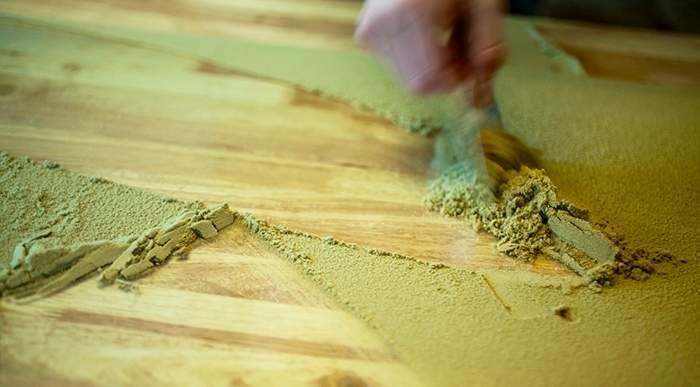All photos by the author
In Santa Rosa, Ca. this past weekend, dozens of Northern California marijuana cultivators gathered at the Emerald Cup to show off their outdoor-grown crop alongside a cornucopia of cannabis-derived products. The farmers' enthusiasm and the diversity of their selection spoke volumes about just how far the cannabis industry has come whilst operating in legal grey area for more than two decades since California legalized medical marijuana through Prop 215 in 1996.
However, in the wake of the Northern California wildfires and just weeks before the official launch of the state's newly regulated adult-use and medical cannabis market, it was hard not to wonder — with the maelstrom of politics, economics, and even nature working against them, how many of these cultivators will actually succeed in the legal market?
So MERRY JANE hit the festival grounds and asked them (along with a few experts) about their survival plans for legalization.
According to E.D. Lerman, an attorney with Emerald Forest Consulting, proper marketing is a vital tool in helping cultivators distinguish themselves and stay competitive in the marketplace. "For the grower going into the industry in the future, there's going to be a big transition period for them. That's going to take them branding and developing their intellectual property so that there's a demand for their product," says Lerman. As bigger businesses start coming in, a consumer's loyalty to or familiarity with a particular brand will be crucial for smaller cultivators in maintaining their market share.

A brand should reflect story of the farmer and their product, says Enrico Moses, CEO of High Standards Agency, which has helped NorCal clients appeal to the SoCal market (i.e. the world capital of the cannabis industry). "It's meditating on who you want to be in the marketplace and what customer is going to appreciate that message," he says. "Be authentic, don't be faking [and] trying to appeal to someone you think you should be appealing to. The great thing about Northern California cannabis, when you compare it to wine, is to look at how California wine is loved all around the world. I don't think people in Napa Valley have to appeal to people in L.A. to sell their wine."
Part of that authenticity is focusing on the factors that distinguish mom-and-pop cultivators from their corporatized competition. Their story — and hence their branding — often revolves around being small-batch, organic, and sun-grown by farmers who pay individual attention to all their crops. The Mendocino Appellations Project, for instance, esteems regions of Northern California where cannabis farmers have a specific agricultural heritage and sophisticated knowledge of the land.
"For us, branding and distinguishing our appellation has been something we're working on to be recognized and have a spot right now as time goes on," says Olivia Caccavo, co-owner of Farms of Trinity Forests. "We come from a really old, tiny weed region [Trinity County, Ca.]. There weren't any farms coming into this legal program before us, and we just wanted to make [the appellation] an opportunity for people to come out of the hills and [sell legally], but it's been a struggle for people to feel comfortable doing that."
Ultimately, the success of these small farmers comes down to the consumer caring about where their cannabis comes from, and how it's cultivated (according to standards including “organic,” “sustainable,” “outdoor,” “small-batch”). "It's marketing, and these big grows are able to fake that, [which] they are," says Caccavo. "You can't believe everything that they write on the jar. But that's all the consumer can see, and where it has to pass through a distributor, there's no direct sales. That means whatever someone is saying about [their] cannabis is based on you believing them."

And that's why two key regulations in California put small farmers at risk: the removal of the one-acre cap threatens small farms by inviting big cultivators to enter the market immediately, and the ban on allowing cultivators to sell directly to consumers obscures consumers' ability to understand how their weed is grown, where it comes from, and why those are important questions to ask. But in Caccavo's eyes, the future is still bleak: "Looking forward to 2023, the small farmer doesn't have a shot," she says. In the meantime, she says, her farm will also try to diversify their product selection.
"Do you want to be boxed wine, or something like you saw in Bordeaux? These are the things that differentiate you in really competitive markets," says Leo Stone, founder of Aficionado. "So look at the wine market. You have a market that's dominated by big agrotech companies, but you also have really small one-acre to 10 or 20 acre plots, which produce some of the best quality in the world. You can only scale quality so high." And that applies to cannabis, as well.
The small farmer's competitive edge relies not only on the strength of the brand, but the diversity and sophistication of the product selection. Rare boutique products and strains can only be cultivated with the kind of attention small-scale farmers are able to provide.
So while it may be easier to "fake" quality with vapes or edibles, flower will likely always have a connoisseur's market — meaning the survival of small, artisan cannabis cultivators depends on an educated consumer base that appreciates and values the nuances which distinguish Walmart weed from boutique bud. This is what marijuana farmers in the Emerald Triangle are betting on, through branding, as they make the heady transition to a legal cannabis market.











